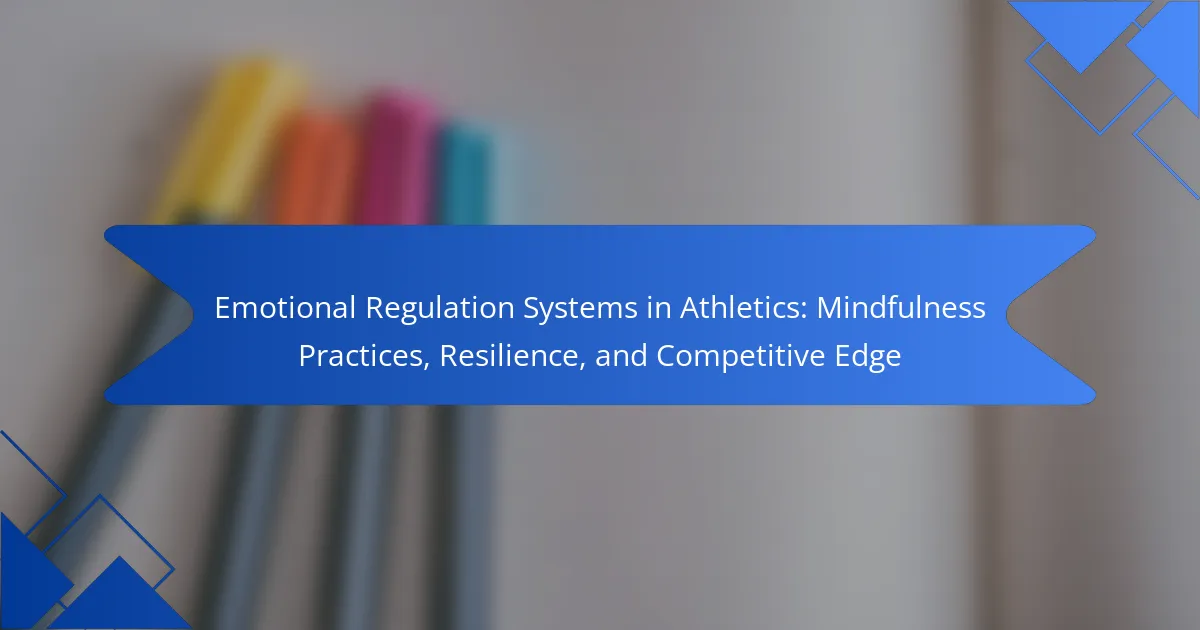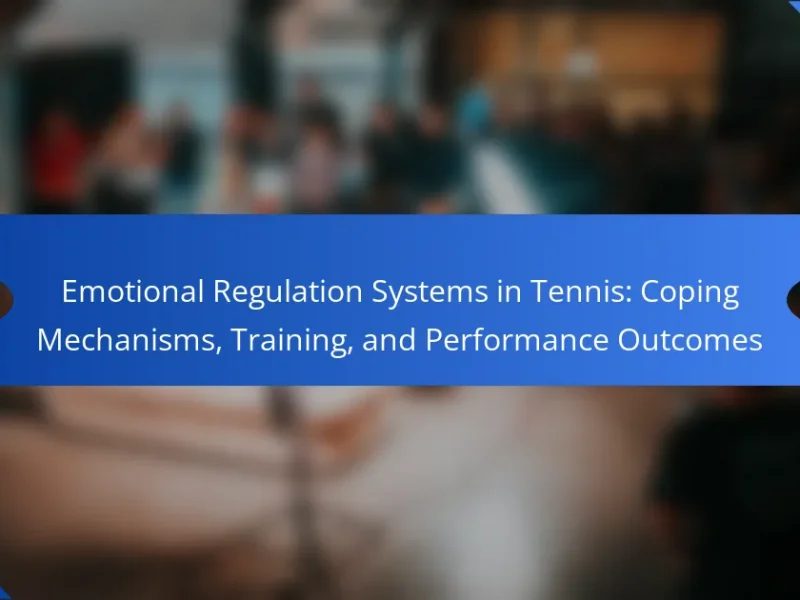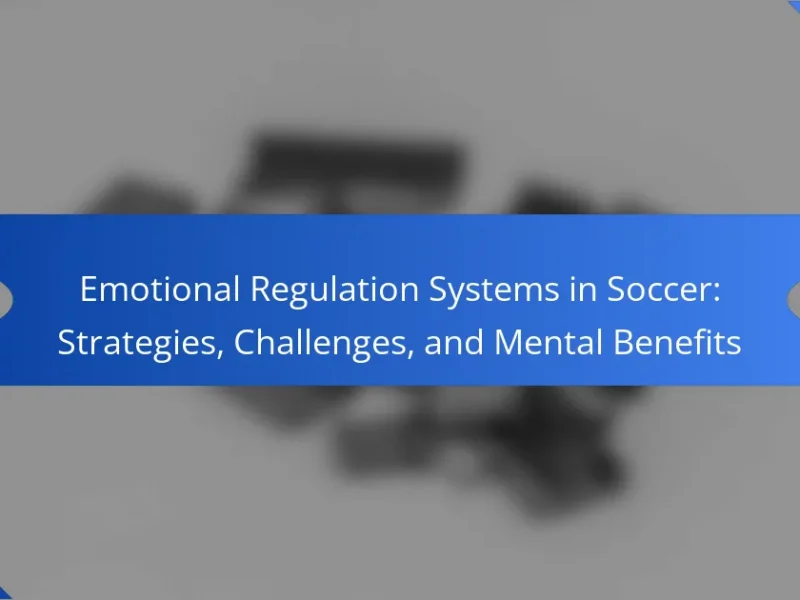Emotional regulation systems are crucial for athletes seeking a competitive edge. Mindfulness practices enhance focus and reduce anxiety, while resilience training fosters recovery from setbacks. These systems improve emotional stability and mental resilience, essential for peak performance. Additionally, unique techniques like visualization and self-talk further optimise athletes’ emotional regulation under pressure.
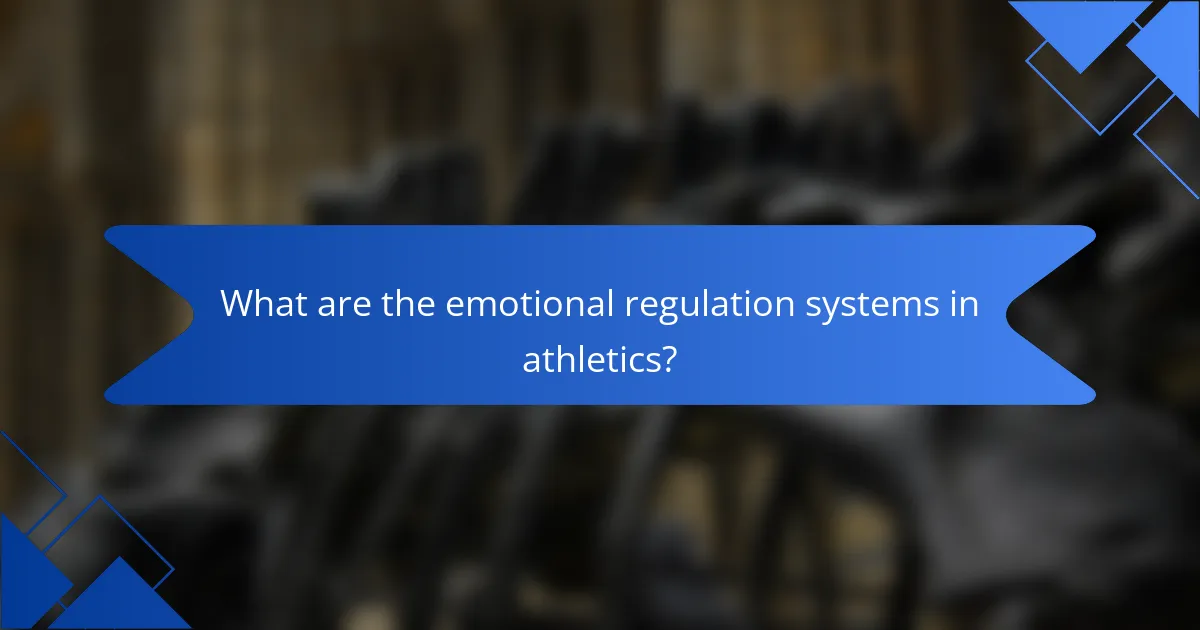
What are the emotional regulation systems in athletics?
Emotional regulation systems in athletics include mindfulness practices and resilience training, enhancing athletes’ competitive edge. Mindfulness improves focus and reduces anxiety, while resilience helps athletes bounce back from setbacks. Research indicates that athletes who practice mindfulness report higher levels of emotional control, leading to improved performance. Resilience training fosters a growth mindset, allowing athletes to view challenges as opportunities. These systems collectively contribute to better emotional stability, crucial for peak performance in competitive environments.
How do emotional regulation systems impact athletic performance?
Emotional regulation systems significantly enhance athletic performance by improving focus, resilience, and stress management. Mindfulness practices help athletes maintain composure under pressure, leading to better decision-making during competitions. Resilience training fosters a positive mindset, enabling athletes to bounce back from setbacks. These elements collectively provide a competitive edge, allowing athletes to perform at their best consistently.
What role does mindfulness play in emotional regulation for athletes?
Mindfulness significantly enhances emotional regulation for athletes by fostering self-awareness and resilience. It helps athletes manage stress, anxiety, and performance pressure. Regular mindfulness practices, such as meditation and focused breathing, enable athletes to stay present and focused during competitions. This heightened awareness allows for better emotional control and decision-making under pressure, ultimately contributing to a competitive edge. Research indicates that athletes who engage in mindfulness training report improved emotional stability and reduced negative emotions, enhancing their overall performance.
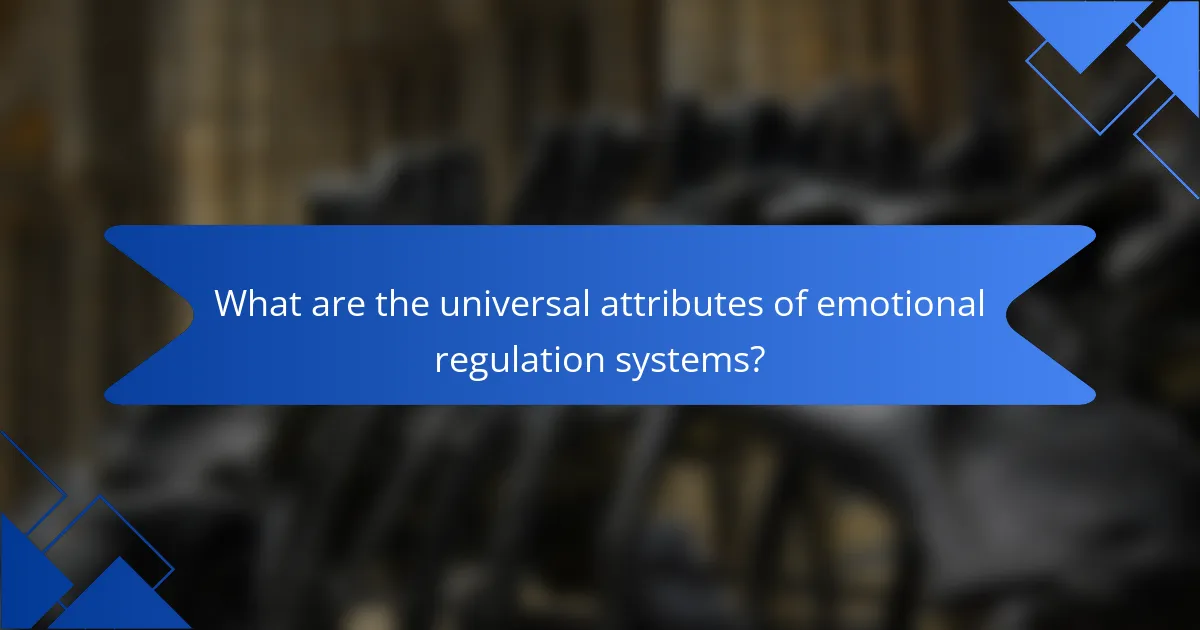
What are the universal attributes of emotional regulation systems?
Emotional regulation systems universally share attributes that enhance mental resilience and performance. Key attributes include awareness of emotions, adaptive coping strategies, and mindfulness practices. These systems help athletes manage stress and maintain focus under pressure. Unique aspects may involve individual techniques tailored to personal experiences, while rare attributes can include specific cultural influences on emotional responses.
How do athletes typically develop emotional regulation skills?
Athletes develop emotional regulation skills through mindfulness practices, resilience training, and competitive experiences. Mindfulness techniques, such as meditation, enhance focus and reduce anxiety. Resilience training fosters adaptability to stress and setbacks, crucial for performance. Engaging in competitions allows athletes to practice emotional control in high-pressure situations, reinforcing their skills.
What common mindfulness practices are used by athletes?
Athletes commonly use mindfulness practices such as meditation, deep breathing, visualization, and body scanning to enhance emotional regulation. These techniques help athletes manage stress, improve focus, and build resilience. Meditation, for instance, fosters a greater awareness of thoughts and emotions, while visualization aids in mental preparation for competition. Deep breathing techniques can quickly reduce anxiety, and body scanning promotes relaxation and presence. These practices collectively contribute to a competitive edge by enhancing performance under pressure.
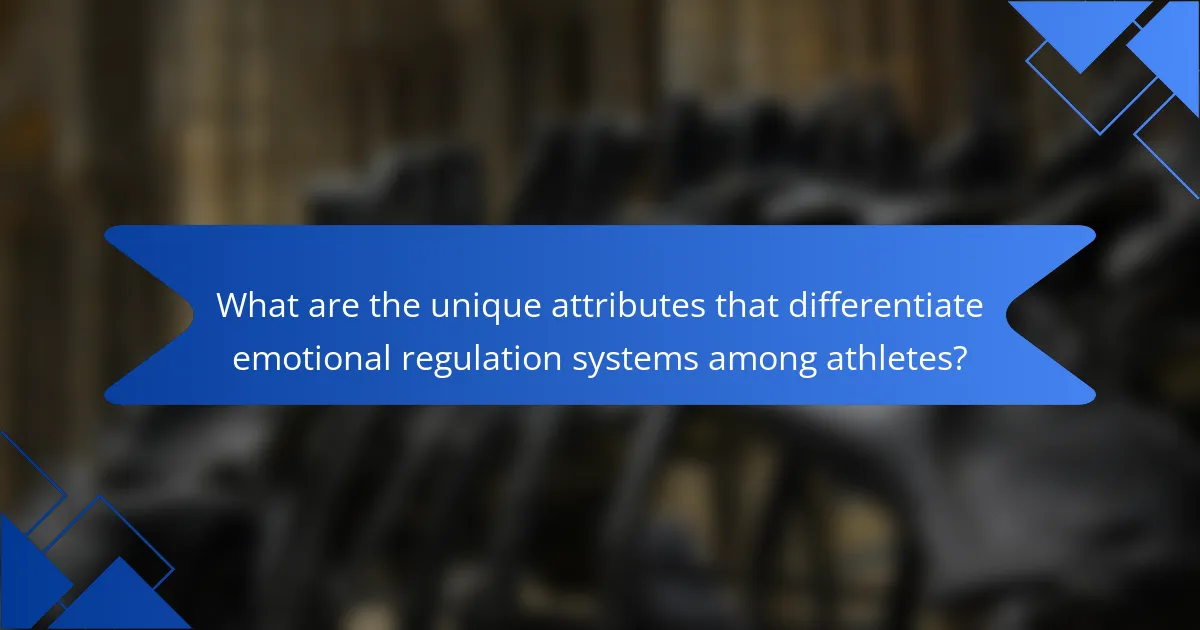
What are the unique attributes that differentiate emotional regulation systems among athletes?
Emotional regulation systems among athletes differ significantly based on their unique attributes. These attributes include mindfulness practices, resilience levels, and their approach to competition.
Mindfulness practices enhance athletes’ awareness of their emotions, allowing for better stress management. Resilience contributes to their ability to recover from setbacks, while a competitive edge often stems from their mental toughness and focus.
Athletes with advanced emotional regulation systems demonstrate unique attributes such as adaptive coping strategies and heightened emotional intelligence. These traits enable them to perform under pressure effectively.
Rare attributes may include specific techniques like visualization or self-talk that further differentiate their emotional regulation capabilities. These unique and rare traits collectively contribute to their overall performance and success in athletics.
How does individual sport influence emotional regulation techniques?
Individual sports significantly enhance emotional regulation techniques by fostering mindfulness, resilience, and a competitive edge. Athletes often engage in focused mental practices that improve self-awareness and emotional control, essential for peak performance.
Mindfulness practices, such as meditation and visualization, help athletes maintain composure under pressure. These techniques cultivate a unique ability to manage stress and anxiety, leading to better decision-making during competitions.
Resilience is another critical attribute developed through individual sports. Athletes learn to bounce back from setbacks, which strengthens their emotional fortitude. This resilience translates into improved coping strategies for life’s challenges outside sports.
Finally, the competitive edge gained from individual sports enhances motivation and goal-setting skills. Athletes often set specific objectives, which reinforces their emotional regulation as they learn to navigate the highs and lows of competition.
What are the unique challenges faced by athletes in emotional regulation?
Athletes face unique challenges in emotional regulation, including performance anxiety, pressure to succeed, and emotional exhaustion. These factors can hinder focus and resilience. Mindfulness practices can mitigate these challenges by promoting self-awareness and emotional control. Additionally, developing a strong support system enhances emotional resilience, providing athletes with the tools to manage stress effectively.
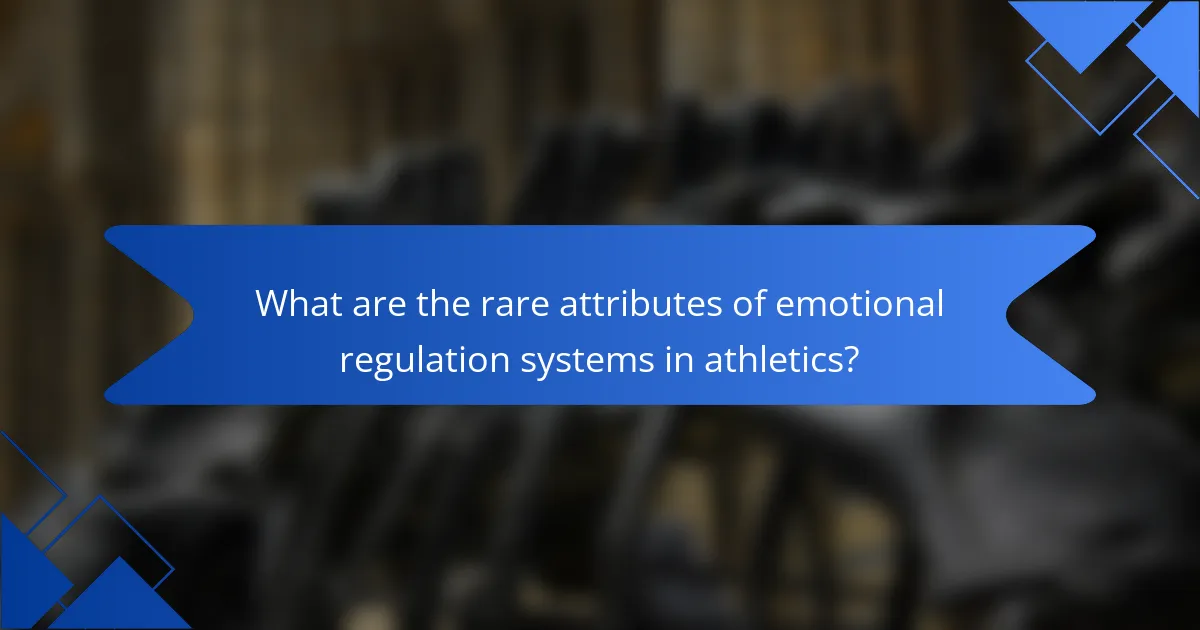
What are the rare attributes of emotional regulation systems in athletics?
Rare attributes of emotional regulation systems in athletics include the ability to harness neuroplasticity for emotional growth, unique physiological responses to stress that enhance performance, and individualised mindfulness techniques tailored to specific sports. These attributes enable athletes to develop distinct emotional resilience strategies, optimising their mental state under competitive pressure.
What innovative emotional regulation strategies have emerged in elite sports?
Innovative emotional regulation strategies in elite sports include mindfulness practices, resilience training, and cognitive-behavioural techniques. These approaches enhance athletes’ focus and performance under pressure. Mindfulness training, for example, fosters present-moment awareness, reducing anxiety and improving decision-making. Resilience training equips athletes to recover from setbacks, maintaining motivation and performance. Cognitive-behavioural techniques help athletes reframe negative thoughts, promoting a positive mindset. Together, these strategies provide a competitive edge by optimising emotional responses during high-stakes situations.
How do cultural factors shape emotional regulation practices in athletics?
Cultural factors significantly influence emotional regulation practices in athletics by shaping athletes’ perceptions and responses. Different cultures emphasise various aspects of emotional expression and control, leading to diverse mindfulness practices. For instance, Eastern cultures often prioritise collective well-being, promoting resilience through community support, while Western cultures may focus on individual achievement, enhancing competitive edge through personal goal setting. These cultural nuances affect how athletes manage stress and emotions during competition, ultimately impacting performance outcomes.
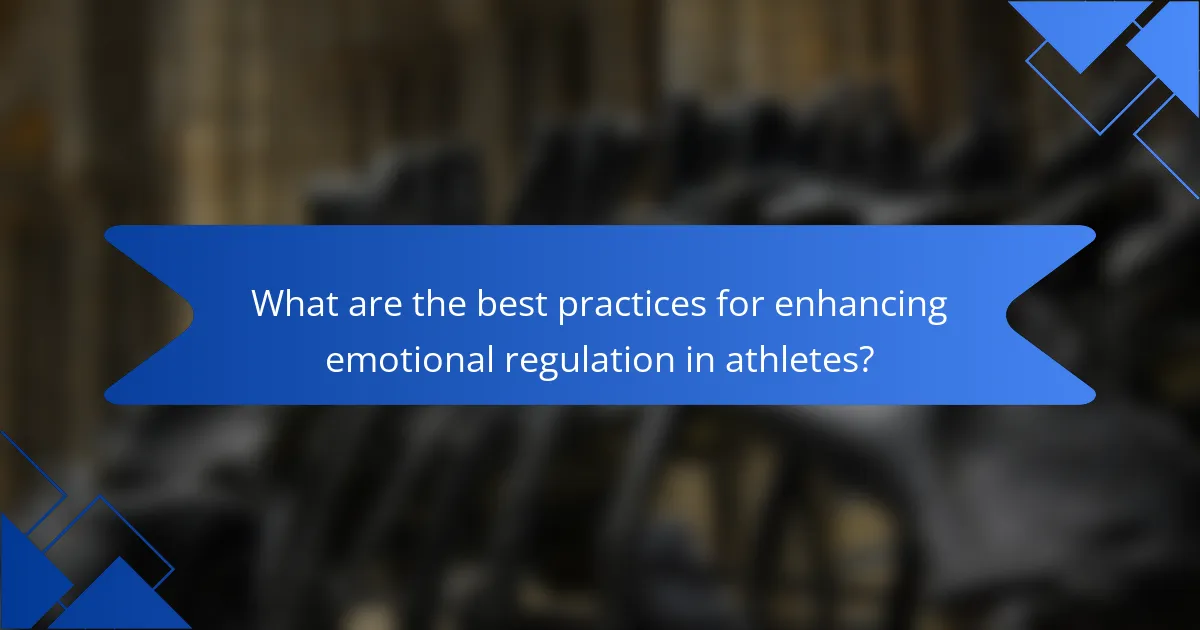
What are the best practices for enhancing emotional regulation in athletes?
Practicing mindfulness, building resilience, and focusing on emotional awareness are key strategies for enhancing emotional regulation in athletes. Mindfulness practices, such as meditation and breathing exercises, promote present-moment awareness, reducing anxiety and improving focus. Resilience training helps athletes adapt to setbacks, fostering a growth mindset that enhances emotional stability. Additionally, developing emotional awareness allows athletes to identify and manage their feelings, leading to better performance under pressure. Integrating these practices consistently can provide a competitive edge, improving overall mental health and athletic performance.
How can athletes apply mindfulness to improve resilience and competitive edge?
Athletes can enhance resilience and competitive edge through mindfulness practices that improve emotional regulation. Techniques like focused breathing and visualization help manage stress, leading to better performance under pressure. Research shows that athletes who practice mindfulness report higher levels of focus and reduced anxiety, contributing to a unique competitive advantage. Regular mindfulness training fosters a positive mindset, allowing athletes to rebound more effectively from setbacks.
What common mistakes should athletes avoid when practicing emotional regulation?
Athletes should avoid common mistakes like neglecting self-awareness, failing to practice consistently, and ignoring emotional triggers. These errors hinder effective emotional regulation, impacting performance.
Neglecting self-awareness can lead to mismanagement of emotions during competition. Athletes must recognise their emotional states to respond appropriately.
Failing to practice emotional regulation techniques consistently limits their effectiveness. Regular mindfulness practices enhance resilience and foster a competitive edge.
Ignoring emotional triggers prevents athletes from developing coping strategies. Identifying these triggers is crucial for maintaining composure under pressure.
What are the steps to implement a mindfulness routine in training?
To implement a mindfulness routine in training, start by setting clear intentions. Next, incorporate focused breathing exercises to centre attention. Schedule regular mindfulness sessions, gradually increasing their duration. Finally, encourage reflection on experiences to foster emotional awareness and resilience.
How can athletes measure the effectiveness of their emotional regulation strategies?
Athletes can measure the effectiveness of their emotional regulation strategies through self-assessment, performance metrics, and psychological evaluations. Self-assessment involves reflection on emotional responses during competition. Performance metrics can include consistency in results and improved focus. Psychological evaluations, such as resilience scales, provide insights into emotional stability and coping mechanisms. These methods help athletes understand the impact of their emotional regulation on performance.
